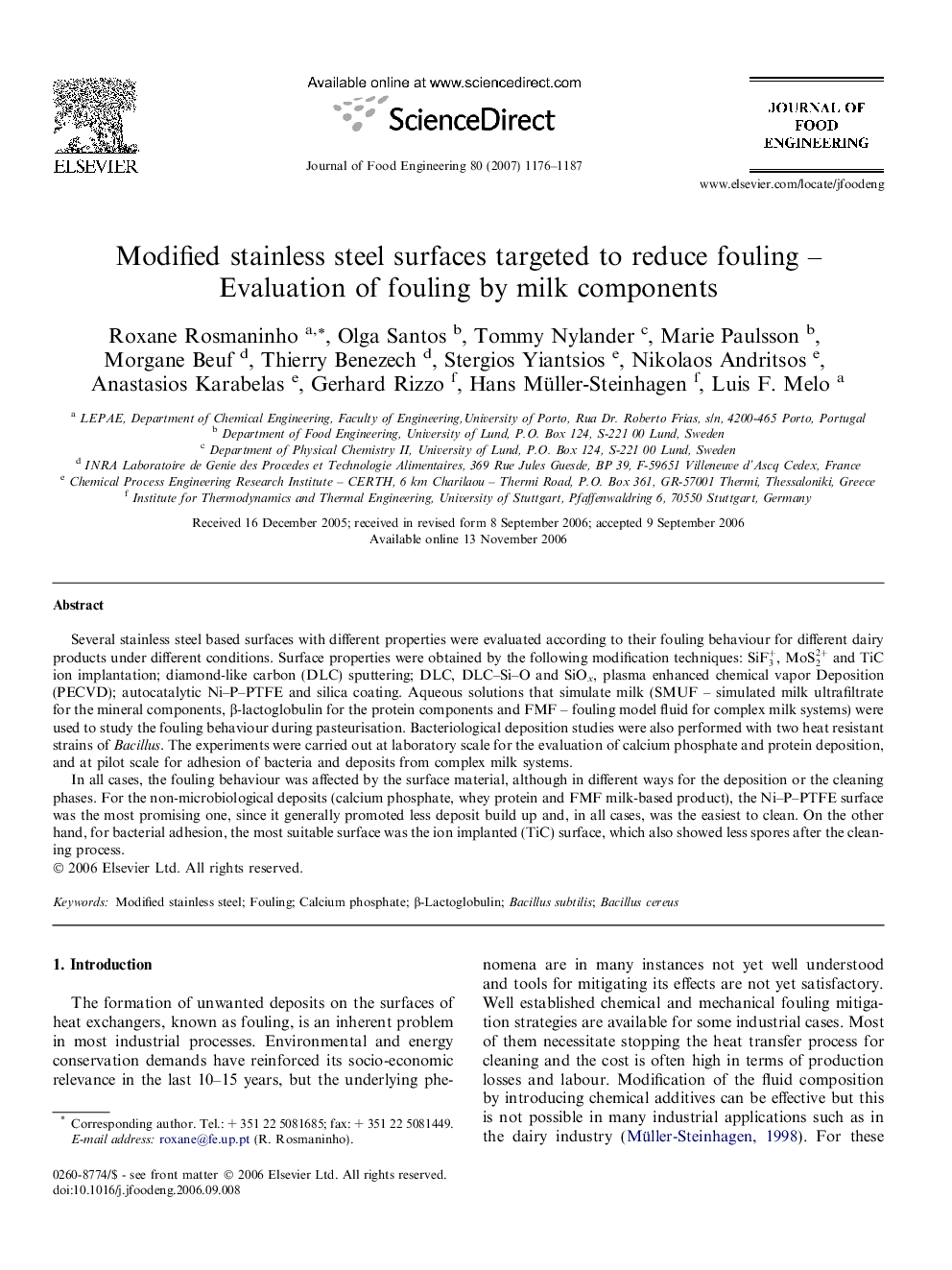| Article ID | Journal | Published Year | Pages | File Type |
|---|---|---|---|---|
| 225783 | Journal of Food Engineering | 2007 | 12 Pages |
Several stainless steel based surfaces with different properties were evaluated according to their fouling behaviour for different dairy products under different conditions. Surface properties were obtained by the following modification techniques: SiF3+, MoS22+ and TiC ion implantation; diamond-like carbon (DLC) sputtering; DLC, DLC–Si–O and SiOx, plasma enhanced chemical vapor Deposition (PECVD); autocatalytic Ni–P–PTFE and silica coating. Aqueous solutions that simulate milk (SMUF – simulated milk ultrafiltrate for the mineral components, β-lactoglobulin for the protein components and FMF – fouling model fluid for complex milk systems) were used to study the fouling behaviour during pasteurisation. Bacteriological deposition studies were also performed with two heat resistant strains of Bacillus. The experiments were carried out at laboratory scale for the evaluation of calcium phosphate and protein deposition, and at pilot scale for adhesion of bacteria and deposits from complex milk systems.In all cases, the fouling behaviour was affected by the surface material, although in different ways for the deposition or the cleaning phases. For the non-microbiological deposits (calcium phosphate, whey protein and FMF milk-based product), the Ni–P–PTFE surface was the most promising one, since it generally promoted less deposit build up and, in all cases, was the easiest to clean. On the other hand, for bacterial adhesion, the most suitable surface was the ion implanted (TiC) surface, which also showed less spores after the cleaning process.
